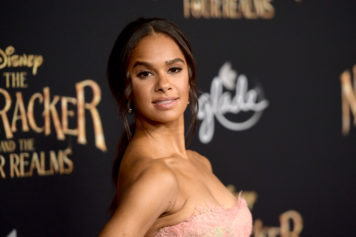Misty Copeland, a trailblazing African-American ballet dancer, has used her voice in the past to speak out about racism and the lack of diversity in ballet. Last year, the 39-year-old said she was beginning to see positive change with ballet after the death of Minneapolis, Minnesota, resident George Floyd. Now she can finally detail what some of those changes are.
She labeled the progression as “incredible” and explained why in an interview with Pointe Magazine. “What’s happened in the last year and a half is the most movement I’ve seen in all of my career. It’s been pretty impressive to see such change in a really short, concentrated period of time because of this racial reckoning within the world.”

Last year, George Floyd, Breonna Taylor, and Ahmaud Arbery were once people that were only known by friends, family and people in their close spaces. But after two of them experienced deaths by white police officers, and Arbery was gunned down by white local residents, a great part of the world quickly became familiar with their names.
Floyd made a huge impact because video coverage of the incident showed officer Derek Chavin kneeling on Floyd’s neck with all of his body weight for more than nine minutes. While Floyd can be heard pleading with the officer and saying that he could not breath, Chauvin continued to stay on his neck even after Floyd became unresponsive and died.
Explaining the effect of Floyd’s murder, Copeland said Black dancers are getting more leading opportunities and even the dancers’ tights are becoming diverse.
“I recently watched Calvin Royal III make his debut as Albrecht at ABT,” she said, referring to “Giselle,” which is a ballet performance that tells the story of Duke Albrecht who falls in love with a peasant girl named Giselle. Royal is the third Black dancer to be a principal dancer in American Ballet Theatre. Copeland is the first.
Speaking more on “Giselle,” Copeland shared her perspective on Black dancers wearing tights that represented their skin color. “For my entire career, there have been a lot of discussions about whether Black dancers should wear tights that represented their skin color,” she said. “To see [corps member] Erica Lall onstage in Giselle, wearing tights that were her color, was huge progress. I felt like I saw her as a person the way that every other dancer is allowed to be seen as an individual, even if they’re in the corps de ballet.”
Even though Copeland is impressed with the change that has happened, she is aware that there is still more work to do.
“At ABT, we’ve had talks about diversity initiatives and bringing in more people of color, not just within the company but in other areas of the institution, and to see it happening is huge. Now, it’s everyone’s responsibility to keep it moving, and not to settle in this moment. I think next is tackling the stories that we’re telling onstage, especially here in America. They need to be relevant and [show] that there’s more than one type of person.”
Copeland recently released her book “Black Ballerinas,” through which she introduces the stories of Black ballerinas who have pioneered their way into the ballet world.


